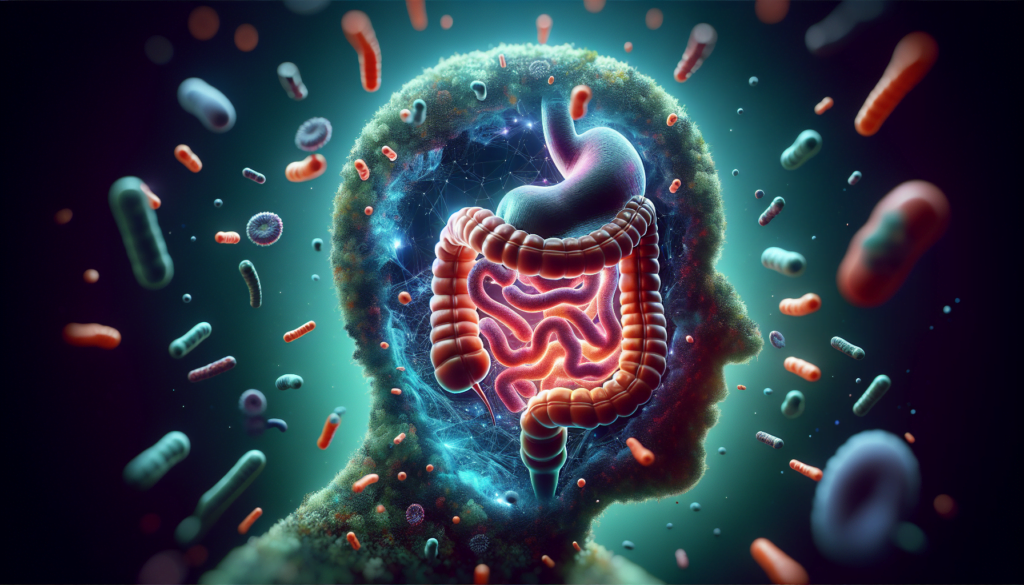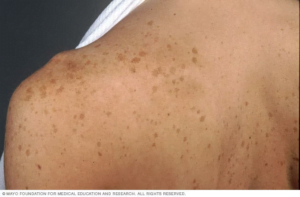Have you ever wondered why some people experience frequent flare-ups of rosacea while others don’t? Well, it turns out that the answer may lie in your gut. Recent studies have shed light on the intriguing connection between rosacea, a chronic skin condition characterized by redness and inflammation, and the health of your gut. This article explores the fascinating relationship between these two seemingly unrelated areas of the body and uncovers the potential impact of gut bacteria on rosacea symptoms. So, if you’ve been struggling with rosacea and seeking a deeper understanding of its origins, keep reading to explore the intriguing link between rosacea and gut health.
Understanding the Connection Between Rosacea and Gut Health

What is Rosacea?
Rosacea is a chronic inflammatory skin condition that primarily affects the face. It is characterized by redness, flushing, visible blood vessels, and in some cases, the development of bumps or pimples. Rosacea can also lead to eye irritation and dryness, as well as thickening of the skin. While the exact cause of rosacea is still unknown, there is growing evidence suggesting a link between this skin condition and gut health.
What is Gut Health?
Gut health refers to the overall well-being and optimal functioning of the digestive system. It involves the balance of the gut microbiome, which is the collection of trillions of bacteria and other microorganisms living inside our digestive tract. A healthy gut microbiome contributes to proper digestion, nutrient absorption, and immune system function. It also plays a crucial role in maintaining a balanced inflammatory response throughout the body.
Prevalence of Rosacea
Rosacea is a fairly common skin condition that affects millions of people worldwide. According to global statistics, between 1% and 10% of the population may have rosacea, with higher prevalence rates reported in fair-skinned individuals. In terms of gender distribution, women are more likely to develop rosacea, although men often experience more severe symptoms. The condition typically appears between the ages of 30 and 50, but it can affect people of all ages, including children.

Symptoms of Rosacea
The symptoms of rosacea can vary among individuals, but there are several primary signs to look out for. The most common symptom is flushing and persistent facial redness, often seen on the central part of the face. This redness may come and go or become more permanent over time. Bumps and pimples, similar to acne, can also develop on the affected areas. In some cases, visible blood vessels (telangiectasia) may appear on the face. Additionally, rosacea can cause eye irritation and dryness, leading to redness, itching, and a gritty sensation. Finally, in more severe cases, the skin may thicken, resulting in a condition known as rhinophyma.
Causes of Rosacea
The exact causes of rosacea are still not fully understood, but it is believed to be a multifactorial condition influenced by various factors. There is evidence to suggest that genetic factors play a role, as rosacea tends to run in families. Environmental triggers, such as exposure to sunlight, extreme temperatures, and certain foods or beverages, can also contribute to the development of rosacea. Diet and lifestyle factors, including alcohol consumption, caffeine, spicy foods, and stress, have been linked to exacerbations of rosacea symptoms.
The Gut Microbiome
The gut microbiome refers to the complex ecosystem of microorganisms that inhabit the digestive tract. It includes bacteria, viruses, fungi, and other microorganisms, which together form a symbiotic relationship with our bodies. The gut microbiome is essential for maintaining overall health, as it contributes to digestion, nutrient absorption, and the regulation of the immune system. It also plays a crucial role in the gut-brain axis, which is the bidirectional communication system between the digestive system and the brain.
Gut Dysbiosis and Inflammation
Imbalance in the gut microbiota, known as gut dysbiosis, can disrupt the delicate harmony of the gut ecosystem. This imbalance can result from various factors, such as antibiotic use, a poor diet, stress, or certain medical conditions. When the gut microbiome is imbalanced, it can lead to increased intestinal permeability, also known as leaky gut syndrome. This allows harmful bacteria and toxins to leak into the bloodstream, triggering a chronic inflammatory response. Chronic inflammation has been linked to the development and progression of various diseases, including skin conditions like rosacea.
Role of the Immune System
The immune system plays a vital role in protecting the body against pathogens and maintaining overall health. In the context of rosacea, the immune system’s response to certain triggers can contribute to the development of skin inflammation. Pattern recognition receptors (PRRs) recognize and respond to microbial components or signs of tissue damage, triggering an immune response. Inflammatory mediators, such as cytokines and chemokines, are then released, leading to inflammation in the affected areas. In some cases, rosacea may have an autoimmune component, where the immune system mistakenly attacks healthy tissue.
Rosacea Triggers
Rosacea symptoms can be triggered or exacerbated by various factors. These triggers can vary among individuals, but common ones include exposure to sunlight, extreme temperatures, hot or spicy foods, alcohol consumption, stress, and certain skincare products. Identifying and avoiding these triggers can help manage rosacea and reduce flare-ups.
Studies Linking Rosacea and Gut Health
Recent research has shed light on the potential connection between rosacea and gut health. Several studies have found evidence of gut dysbiosis in patients with rosacea, indicating an imbalance in the gut microbiome. The disruption of the gut-brain axis, caused by gut dysbiosis, may contribute to the chronic inflammation seen in rosacea. Furthermore, studies have shown a correlation between increased intestinal permeability and rosacea, suggesting that leaky gut syndrome may play a role in the development and progression of the condition. Additionally, interventions such as probiotic supplementation and dietary changes aimed at improving gut health have shown promising results in reducing rosacea symptoms.
In conclusion, while the exact cause of rosacea remains elusive, understanding the relationship between rosacea and gut health can provide valuable insights for its prevention and management. Maintaining a healthy gut microbiome through proper nutrition, stress management, and lifestyle choices may help improve rosacea symptoms and reduce flare-ups. Further research into this connection is needed to develop targeted therapies and interventions that can effectively address both the skin condition and gut health.


